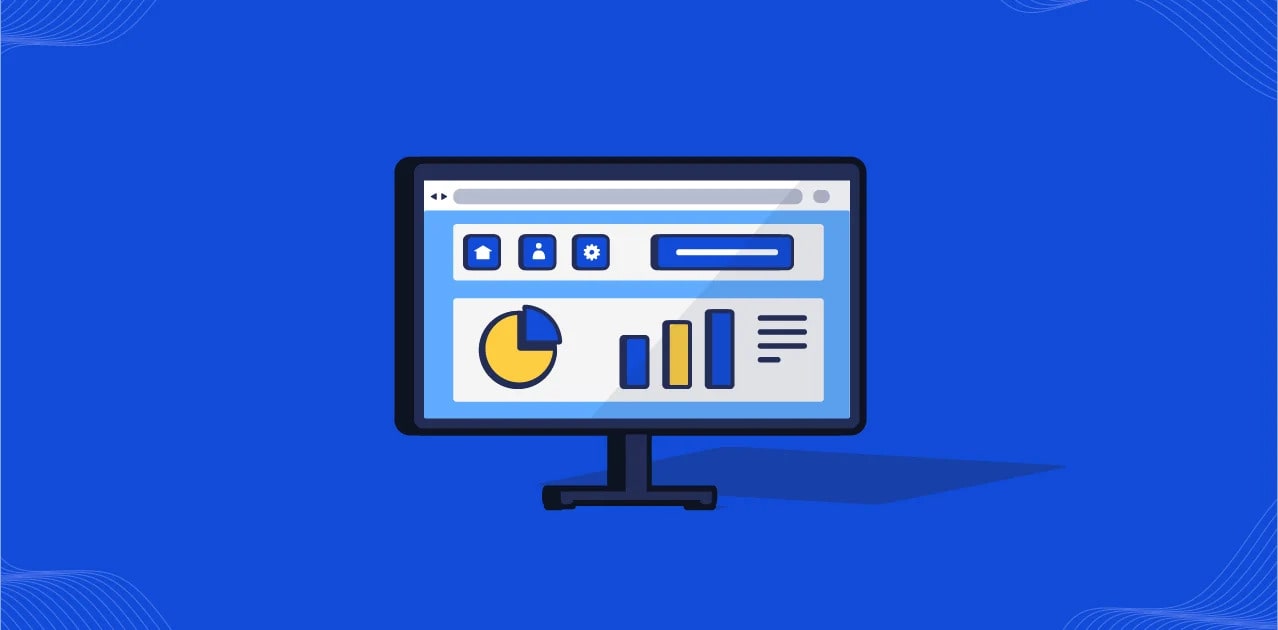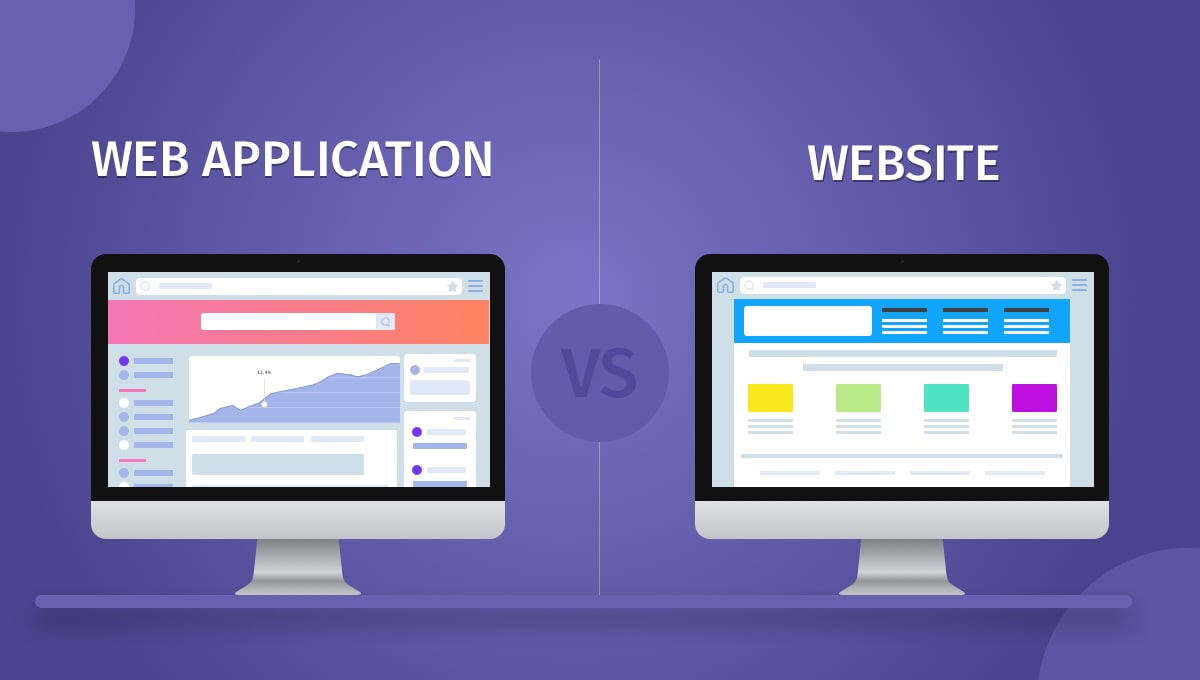
In earlier, long-forgotten times, when Windows 98 was still a thing, web app development was acknowledged a mere child’s play. Combine HTML, CSS, and basic Javascript, and voila, you have your website. Plain, mixed, extremely vivid, and sharp that’s how you would define a typical web app that you can find on the Internet. Now there are tons of app development firms ready to build a web app for any kind of business. Web app development offers real-time access to all types of data and information within any business sector, without the need for download links or app stores. With web application development, users can complete tasks immediately rather than waiting for long periods between requests for data on the internet. They are fast, easy to use and provide instant responses. A web developer should have a strong understanding of the basics – HTML, CSS, and JavaScript -after which they can learn about what goes behind the scenes to build their apps.
The architecture of web application
To learn how your web application functions, how it associates with the user, how it interacts with the database, and how it can accomplish tasks based on user interactions with your application, you must understand the architecture of web apps. When the users visit your web application, they witness the website’s user interface move around for a while and then start clicking buttons you have expertly and ideally placed on your website. A web application design is effective for maintaining the robustness of the web app, optimizing the performance of the web app, boosting the reliability of the web app, and securing the web app from malicious invasions and hackers. Pretty important, isn’t it?What is a web application?
A web application is an interactive app developed using web development technologies that users can get from their browsers. Thus, web apps have the typical front-end and back-end web development technologies. In theory, web apps are nearly related to websites; therefore web app development and web development share many characteristics.Components of a web application
- Components responsible for the web application’s UI and UX design- while these components are not directly liable for changing the programming features of the web app, they are an inherent aspect since the visual appearance is the first point that gets your users hooked on your web app.
- Components responsible for the structural enhancement of the web application- the structure of a web app is the client and the server-side. The structural enhancement enhances the communication between the two sides and offers the users a faster and more reliable response.
- Components liable for managing the client-side of the web application are formulated in HTML, CSS, and JavaScript and make up the part with which the user interacts. HTML gives the skeleton, CSS provides the styling, and JavaScript offers functionality to the web app.
- Components that are responsible for handling the server-side of the web application- the server-side of the web application is further divided into two sections–
- The application’s logic is developed by server-side programming languages like Java, NodeJs, Ruby, etc., and the portion where data is saved for your website, the database.
- The application’s logic interacts with the requests from the client-side and fetches data from APIs or the website’s database.

Image Source: https://www.techuz.com/blog/wp-content/uploads/2018/10/Web-application-vs-website.jpg
The distinction between a web application and a website
You may have heard the terms “web app” and “website” being used interchangeably. However, while they may look and feel similar, there is a clear distinction between the two. Web applications are created to be interactive, whereas a website’s primary goal is to grant data. Differentiating one from the other is admittedly nit-picky, but once you start understanding the difference, you’ll see why it matters. The web application is a piece of software that the browser can access. Web applications require authentication. The web application employs a compound of server-side scripts and client-side scripts to provide information. It requires a server to manage inquiries from the users. Example: Google Apps A website is a set of relevant web pages that includes images, text, audio, video, etc. It can consist of one page, two pages, and several pages. A website gives visible and text content that users can view and read. To view a website requires a browser (chrome, firefox). There are different types of websites like Archive, Blog, Community, Dating, etc. Example: Amazon, YouTube, etc.What is web app development?
Web app development is the process of building web applications that are accessible to the public through a browser. Web app developers use different programming languages such as HTML, CSS, and JavaScript to develop software programs, websites, and other computer-related products for the internet. Web App Development also includes integrating these programs with databases, server systems, and other technologies related to programming. The most popular platforms used in web app development are Ruby on Rails, PHP, or ASP.NET MVC, which help simplify coding tasks by dividing them into manageable parts. Web apps are a significant part of business in this day and age. By utilizing web applications, organizations would now be able to build and get less complex and accomplish their goals faster. It is not helpful for organizations to see improvement in their industry without a proper web application. It can be of any sector. Therefore, the significance of web app development is tremendous. Undoubtedly, web app development is getting mainstream when any office requires reaching more followers, consumers, and clients in less time.Types of web application development
Over the years, the acceptance of smartphones has significantly advanced as compared to that of the web. However, in businesses, online web experience plays an important role. The introduction of the latest web app technologies has met the requirements and needs for an online web experience. The web app development isn’t limited to cell phones or tablets; rather, this kind of utilization is meant to operate on any browser, on fixed PCs. As a result, these web apps are robust, scalable, and reliable compared to a website.Static web applications
This is one of the kinds of web app development that delivers directly to an end user’s browser, generally recognized as the Static Web Application. If you wish to build a static web app, the first thing to know is that this type of web app displays almost no content like server-side alteration of the HTML, CSS, or JavaScript content and is not particularly flexible.Single-page applications
Single-page apps allow customers to interact with the website page with no interference. Requests and responses take place efficiently because of restricted quantities of data. SPAs are faster than conventional web apps as they make logic on the internet browser rather than the server. SPAs are simple to develop, debug, and use, which makes them smooth and fast.Dynamic web applications
This style of web app development is more technically complex than static apps. In this case, they hold data sets or gatherings with a constant capacity to restore or change the available info. This is usually because of a CMS or Content Management System.What are progressive web apps (PWAs)?
Progressive web apps or PWAs are a type of web app that is relatively new in the digital world. PWAs combine popular features of both native and hybrid apps. Having a PWA means going through the standard download and install method that users expect with mobile apps. Both the Google Play Store and the Microsoft Store welcome PWAs to their platform. So in some ways, a PWA is related to a mobile app. Progressive web apps start from a user’s device without the requirement to open a web browser first, and they can send push notifications instantly to your mobile device. They can also operate offline and load in a jiffy.Advantages of web apps
You’ll see that web apps are a practical option for increasing the UX of customers who prize user engagement in their web browsing.-
Great flexibility
-
More convenience
-
Easy development

Parvin Khatun is a writer who works in Squash Apps is dedicated to providing high-quality content that can help clients get more visibility on the search engine results pages. She works hard to boost her clients’ online presence through her content writing services- she has experience in SEO content writing, she writes about website articles, technical articles, and many others.


